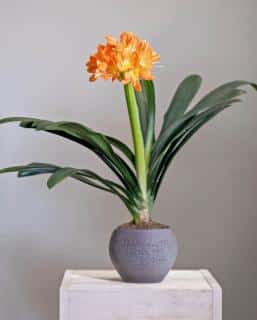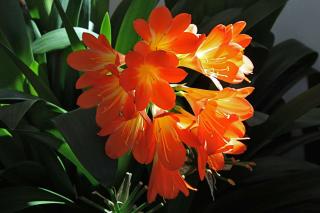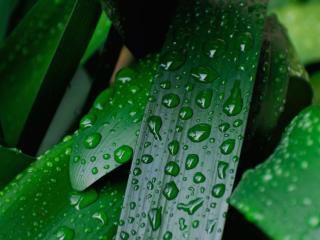

Clivia, or St Joseph’s lily, is an elegant flower-bearing indoor plant.
Key Clivia facts
Name – Clivia
Family – Amaryllidaceae
Type – indoor plant
Height – 16 to 24 inches (0.4 to 0.6 meters)
Exposure – well-lit or part shade
Soil: soil mix – Foliage: evergreen – Flowering: spring
It makes our houses and apartments look lively with its elevated ornamental impact and its unique flowers.
Clivia will only grow outside if the weather doesn’t ever get cold. It’s a tropical plant that isn’t hardy at all.
Clivia is a plant that shouldn’t be moved around too much. It likes living in tight spaces and doesn’t cope well with being repotted frequently.
 So you should thus only repot every 2 or 3 years and preferably in spring.
So you should thus only repot every 2 or 3 years and preferably in spring.
Repot your clivia in a pot that is slightly larger than the previous one.
Remove wilted flowers regularly by snipping off the floral scape at the base.
Also eliminate yellowing leaves.
The best place to set up your plant is near a window that lets a lot of light through, but isn’t in direct sunlight during the warmest hours of the day.
 It is indeed vulnerable to excess sun that might dry the plant up.
It is indeed vulnerable to excess sun that might dry the plant up. Regular but moderate watering is called for.
Regular but moderate watering is called for.
All year long and especially during summer, spray water on the leaves to recreate the moisture levels of its natural habitat.
In spring and summer
Keep the soil mix moist and check that water drains properly.
Add flower plant liquid fertilizer every 8 to 15 days during the growing phase.
In fall and winter
Reduce watering and wait for the soil to be dry before watering again.
Most diseases targeting the plant are common indoor plant diseases and particularly scale insects.
However:
A marvelous indoor plant, clivia is however very poisonous and must be handled with gloves to avoid risking intoxication.
Read also: